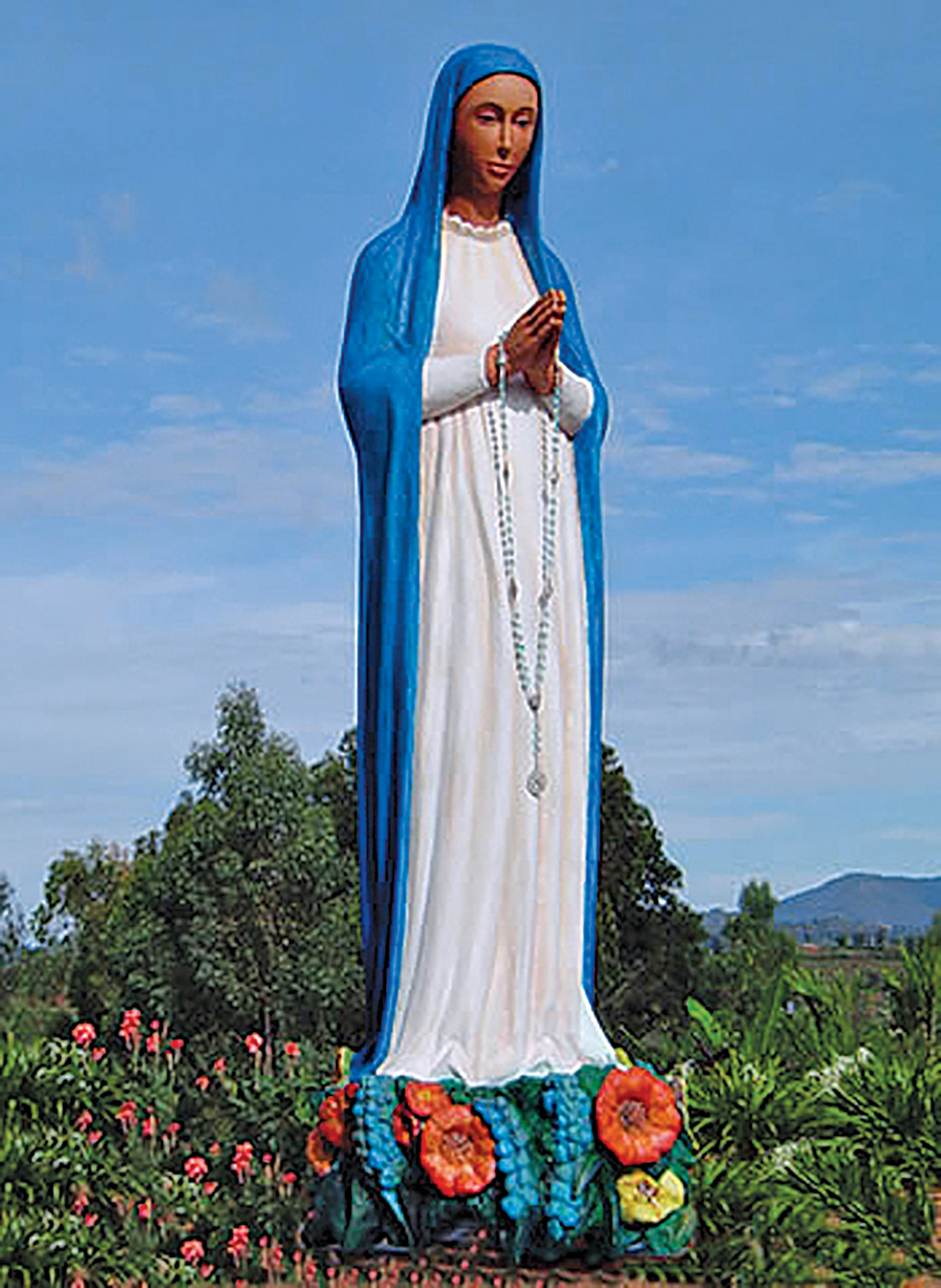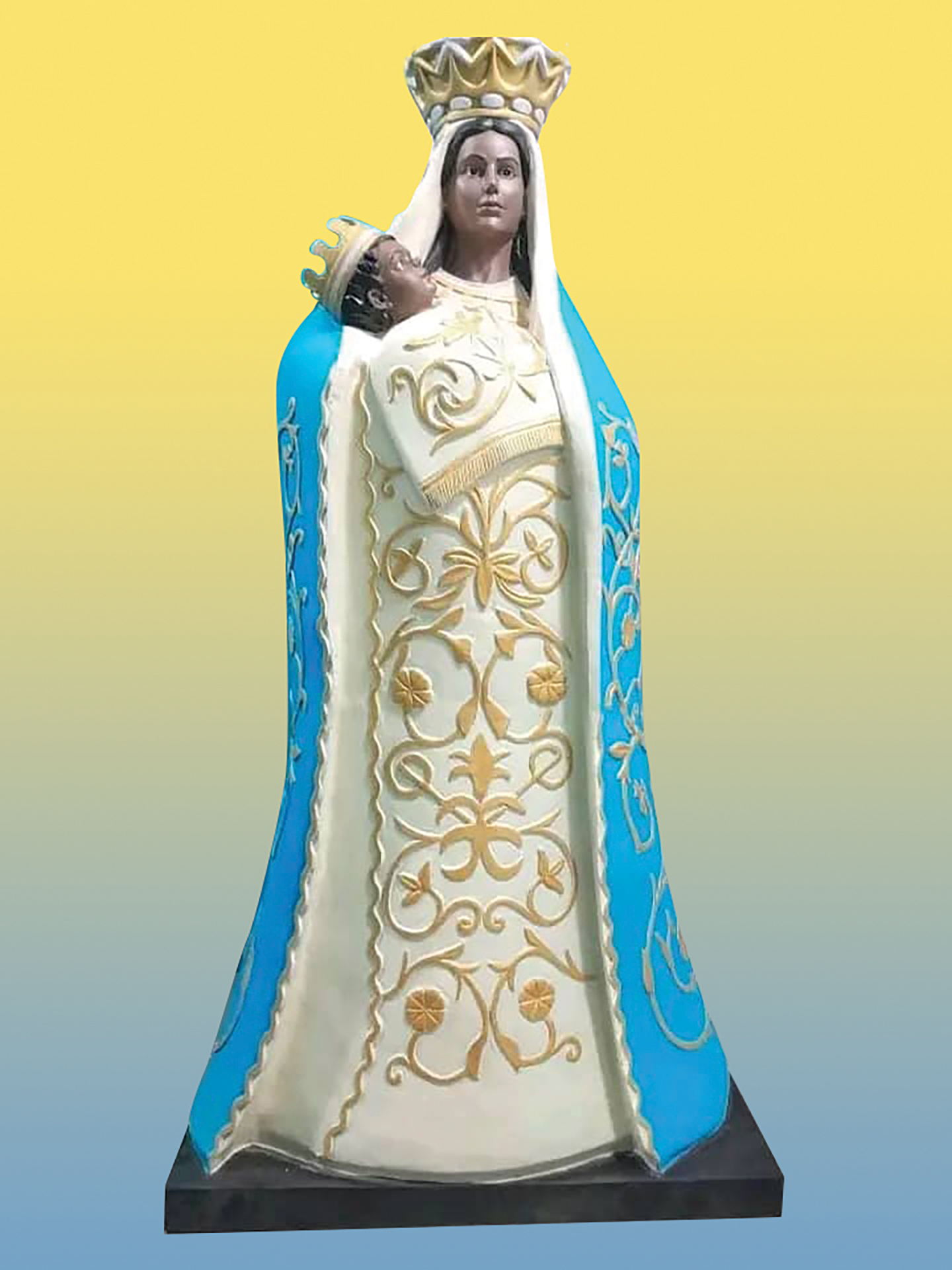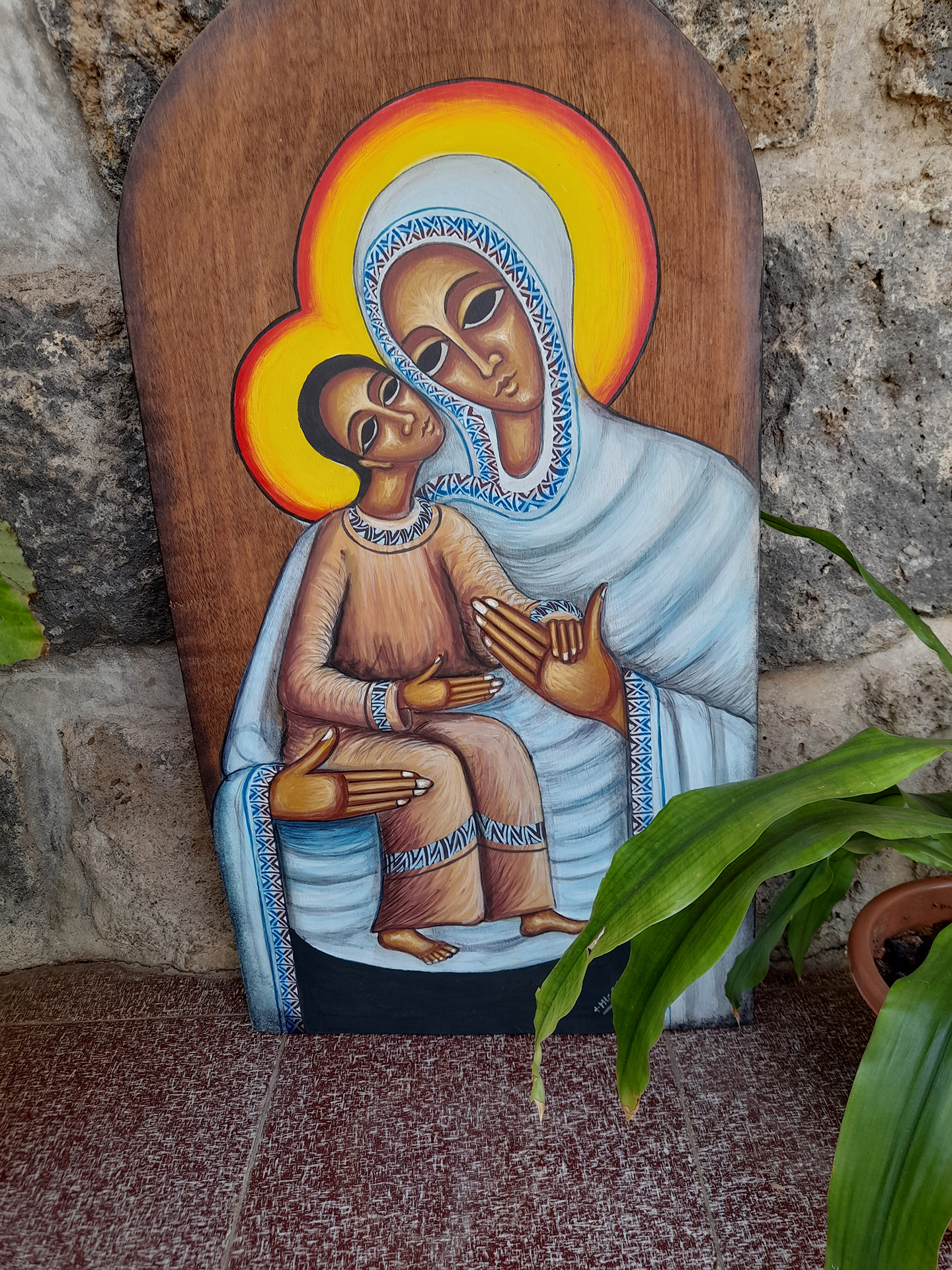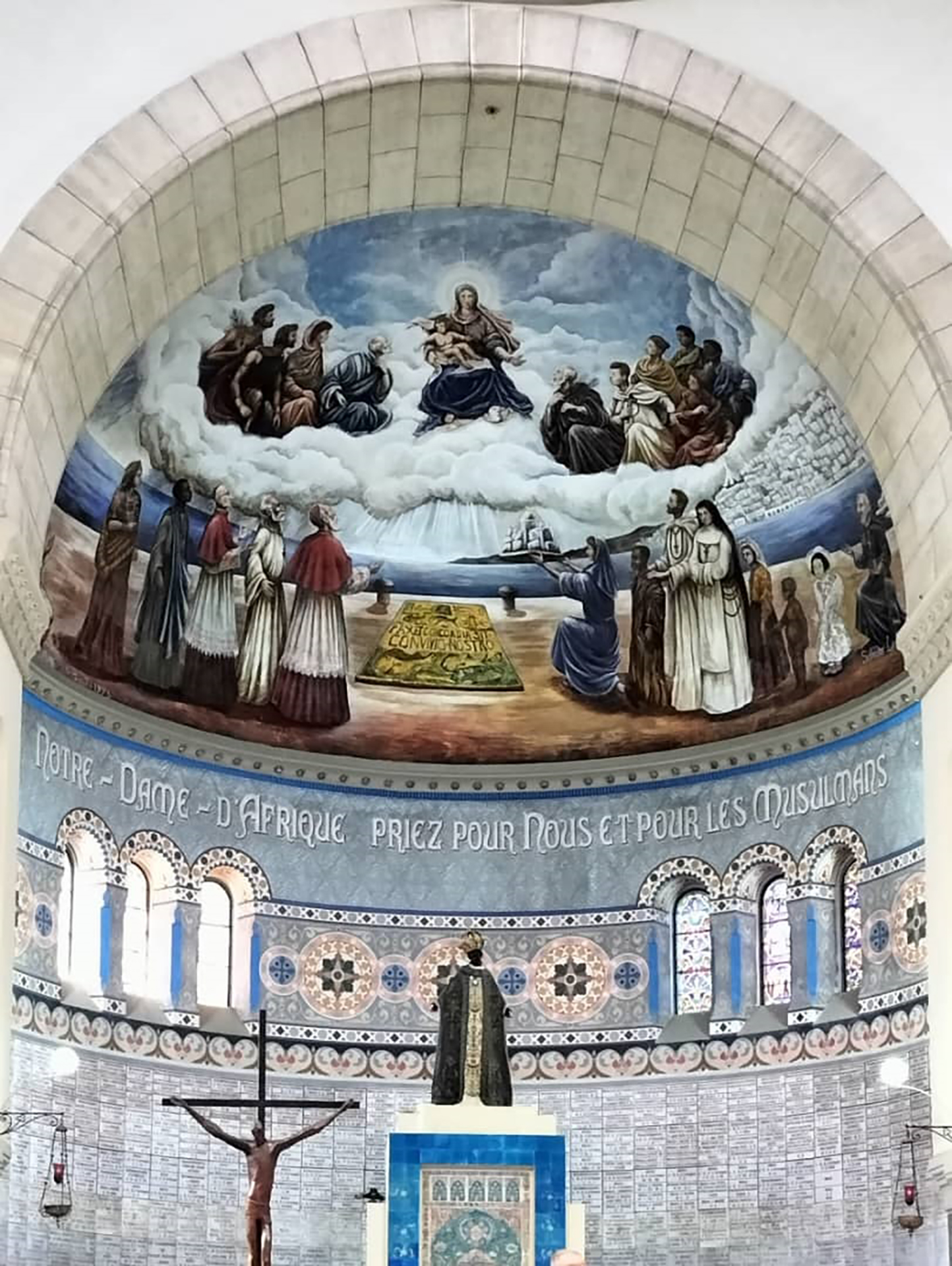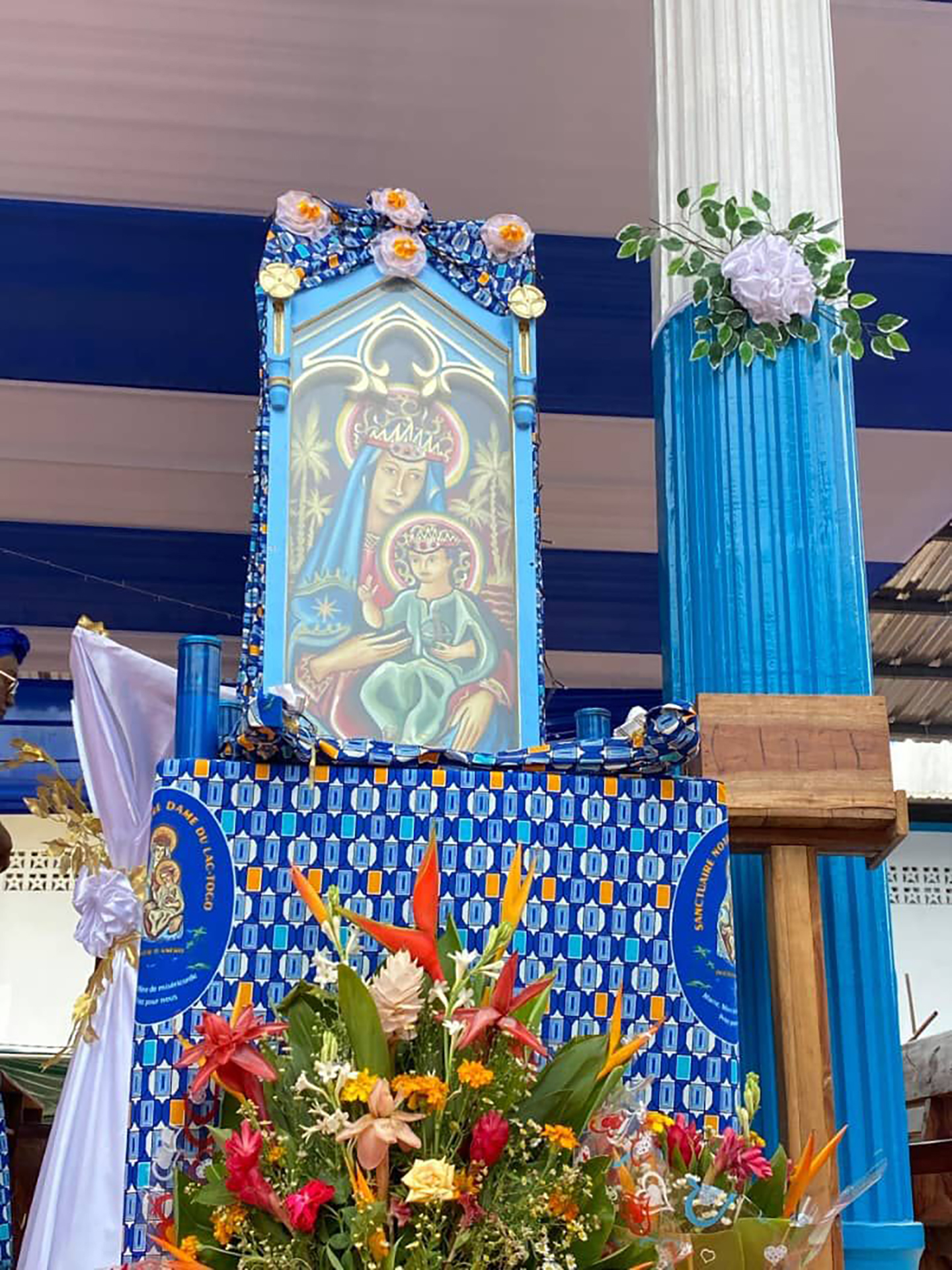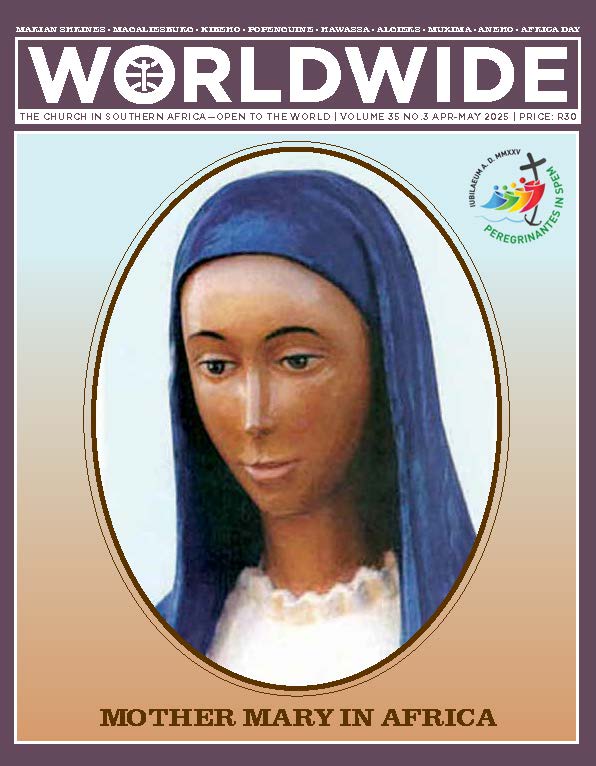
MOTHER MARY IN AFRICA
Head of the Statue of Mother Mary at Kibeho, Rwanda, carved by Marek Kowalski and based on the models of Jean Pierre Sibomana and Faustin Kayitana. In the statue, Mother Mary holds the Seven Sorrows Chaplet, a Marian devotion reintroduced to the Catholic community by Our Lady of Kibeho.
Kibeho is the only Marian apparition on African soil, officially recognized by the Church. Mother Mary’s requests for prayers preluded the 1994 Genocide.
SPECIAL REPORT • MUXIMA-ANGOLA
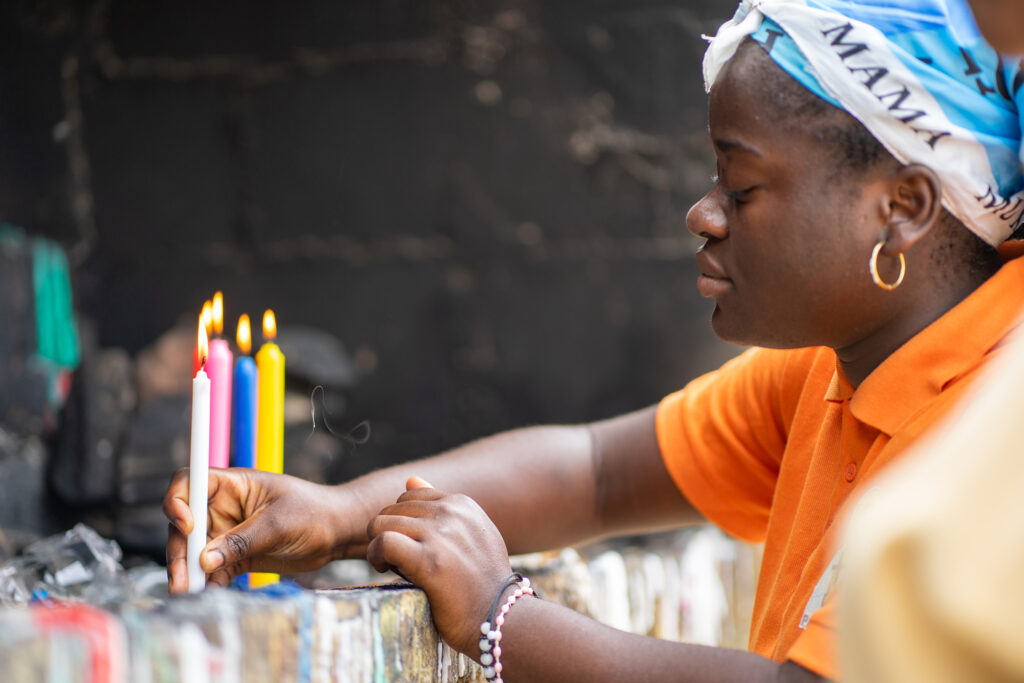
MUXIMA OR THE MOTHER OF THE HEART
Every year the Sanctuary of Our Lady of the Conception of Muxima welcomes about two million pilgrims from all over Angola and other countries, who come in search of spiritual nourishment, with great faith in God and trust in the power of the intercession of Mama Muxima, patron saint of the sanctuary.
BY ENRIQUE BAYO MCCJ
A DISTANCE of 130 kilometres, on a road in very good condition, separates Luanda from the Sanctuary of Muxima, passing over the modern bridge 17 de Setembro (17 September in English) that crosses the Kuanza River and facilitates the journey from the capital to the sanctuary.
The sanctuary is situated next to the majestic Kuanza River, after which Angola’s currency is named. At the top of a hill is an old military fortress and at its foot is the small church that houses the image of Mama Muxima. Both buildings were constructed by the Portuguese in 1599 and, due to their great historical value, have been declared national monuments.
Most visited
Even on ordinary weekdays, the church is filled with people, mainly women, who attend the 12 noon Eucharistic celebration. The sanctuary’s regular programme includes three Eucharists from Monday to Friday and several more on Saturdays and Sundays. In addition, every Saturday night the rosary of light is prayed, and on the third Friday of every month there is a vigil where the participants spend the whole night in prayer. When there are pilgrimages, special programmes are prepared.
Fr Agustin Kahanda is the vice rector of the shrine. When asked about the importance of the shrine, he mentions, with healthy pride, that it has been “the biggest shrine in the whole of Southern Africa, the one that receives the highest number of pilgrims as well as many tourists too. Every week, pilgrimages of families, groups, and members of Christian movements from different Angolan dioceses arrive. Every year, about two million pilgrims visit the shrine and during last August’s great pilgrimage alone we welcomed almost a million people.”
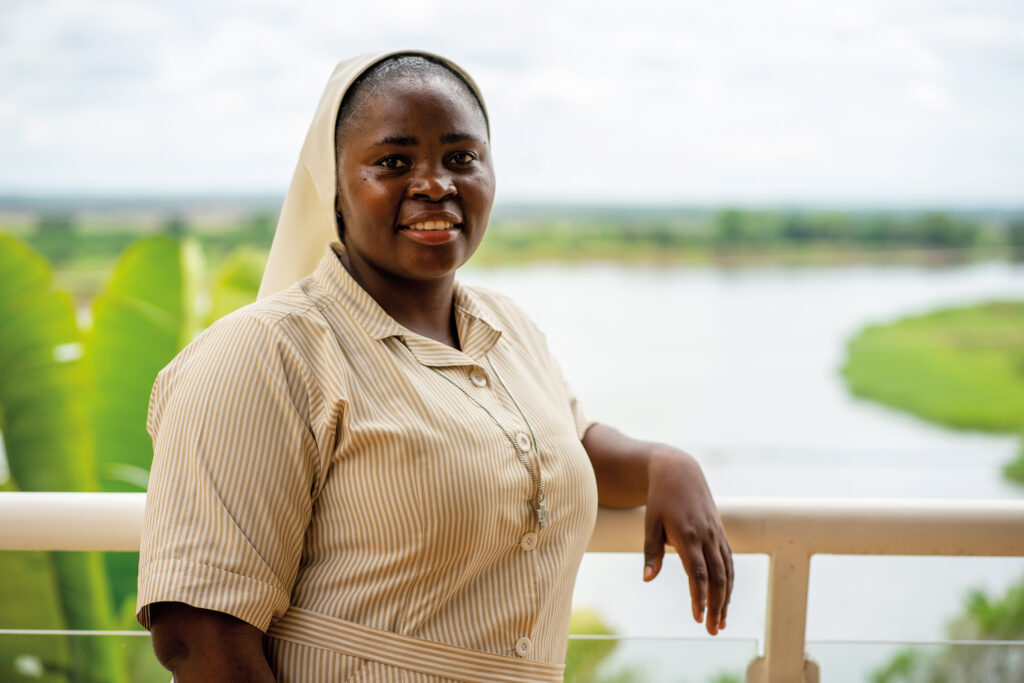
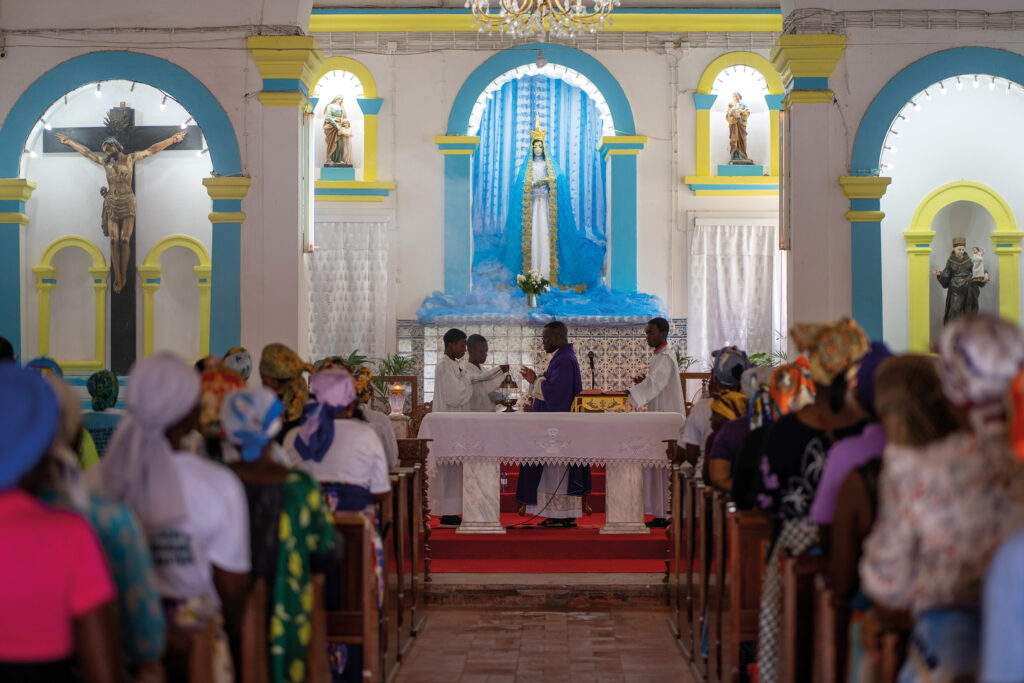
Fr Bienvenu Pika, a Congolese missionary of the Dehonian congregation who has been working in Angola since 2018, took part in the great national pilgrimage and was moved by the beauty of the candlelight procession in the evening: “Beautiful, beautiful. The image of Mama Muxima arrived by boat on the river and was welcomed by the visitors. There were hundreds of thousands of pilgrims making it impossible to walk, so everyone stayed where they were with lighted candles in their hands. It was a luminous sign accompanied by songs that overwhelmed you.”
It is hard to believe how so many people can gather in one place simultaneously. There is no large esplanade, as is the case in the Marian shrines of Lourdes or Fatima, nor are there any public services, hostels, lodges or suitable places for people to stay. Fr Agustin acknowledged the lack of structures, but assured us that “work is being done in collaboration with the government to open up spaces, some land is being re-zoned and soon there will be more improvements.”
The history
This place was for almost 300 years a meeting point for enslaved people who were taken from here to the coast, to begin their journey without return to the American continent. Fr Agustin said that “the main reason why the Portuguese built the church next to the fortress was to ‘baptise’ the slaves, before their departure.”
Documents exist that record ancient pilgrimages to the shrine, but only after Angola’s independence in 1975 did they become commonplace. Gradually, Mama Muxima conquered the hearts of Angolans until the shrine has now become the country’s major centre of spirituality.
“We try to console them and give them hope for life, assuring them that, even if there are people who look down on them, God always beholds them with a loving gaze.” (Sr Luisa Matau)
To accompany and assist the millions of pilgrims who visit the shrine every year, a community of seven priests has been formed and they belong to the three dioceses that share the management of the shrine: the archdiocese of Luanda and the dioceses of Viana and Caxito. There is also a retreat house with 40 individual rooms, owned by the diocese of Viana and managed by the Sisters of Our Lady of Muxima, an Angolan congregation founded in 1991.
Listening and consoling
On the large terrace of the sanctuary, with a wonderful view over the river Kuanza, we, members of the team of Mundo Negro, were received warmly by Sr Luisa Matau Chaves.
“Why do pilgrims come to the shrine,” we asked her.
“Because they feel that this is a welcoming place where they are listened to. They come with great faith to share their many problems and difficulties with Mama Muxima or to thank her for some situation that has improved their lives,” she answered.
When we wanted to know what these problems were, Sr Luisa gasped at the dimension of our question.
“If we wanted to describe them all, we would never finish the interview. Among them, conflicts in family relationships, infertility in their homes, accusations of witchcraft (all too common in our cultural context), or economic difficulties. We try to console them and give them hope for life, assuring them that, even if there are people who look down on them, God always beholds them with a loving gaze.”
The vast majority of those who go on pilgrimage to the shrine are women, and we wanted to know why.
According to Sister Luisa, “perhaps it is because in our Angolan reality, women are the ones who take care of the home, and when there are difficulties, all the problems fall on them. Everyone suffers when the family does not function, but the woman suffers more, she is the main victim.”
Fr Bienvenu complemented the nun by reminding her that the sanctuary was one of the places where the ‘pastoral of listening’ is practised, an initiative of the Episcopal Conference which invites priests and also some religious and authorised lay people to welcome and listen to all people, Christians and others, who are in need of consolation.
“Many people are unable to receive the sacrament of penance, and this pastoral care allows us to approach their life situations. This service is absolutely free of charge, unlike some sects that ask for money for this ministry. The aim is to bless, to give people courage and to help them to make a journey of conversion. During the pilgrimages, from morning to evening, there are queues of people who are eager to go to confession or to be received in this pastoral care of listening. It is very demanding for those of us who dedicate ourselves to it,” concludes Fr Bienvenu.

